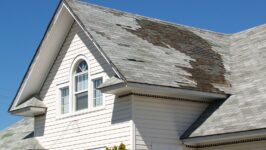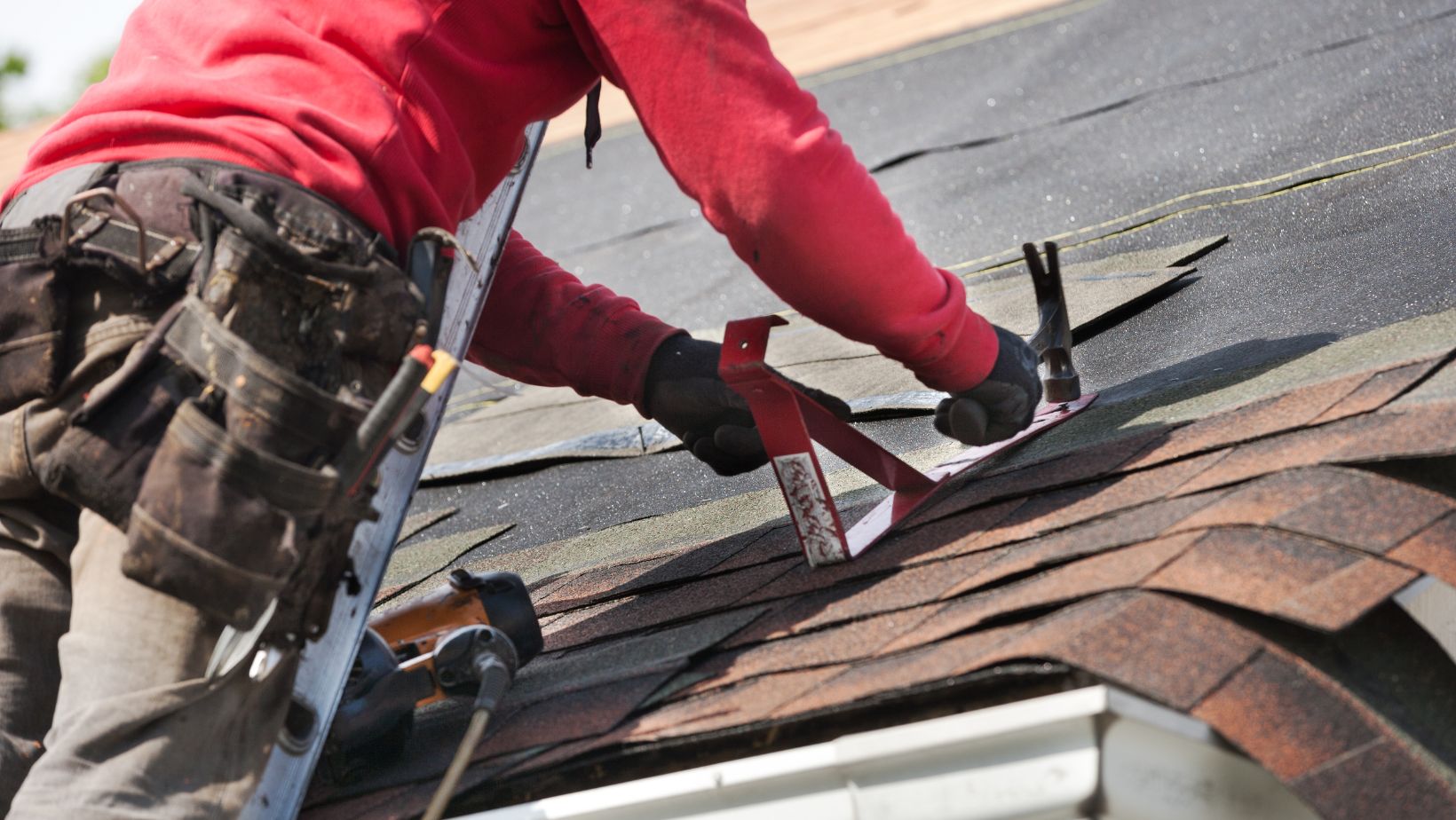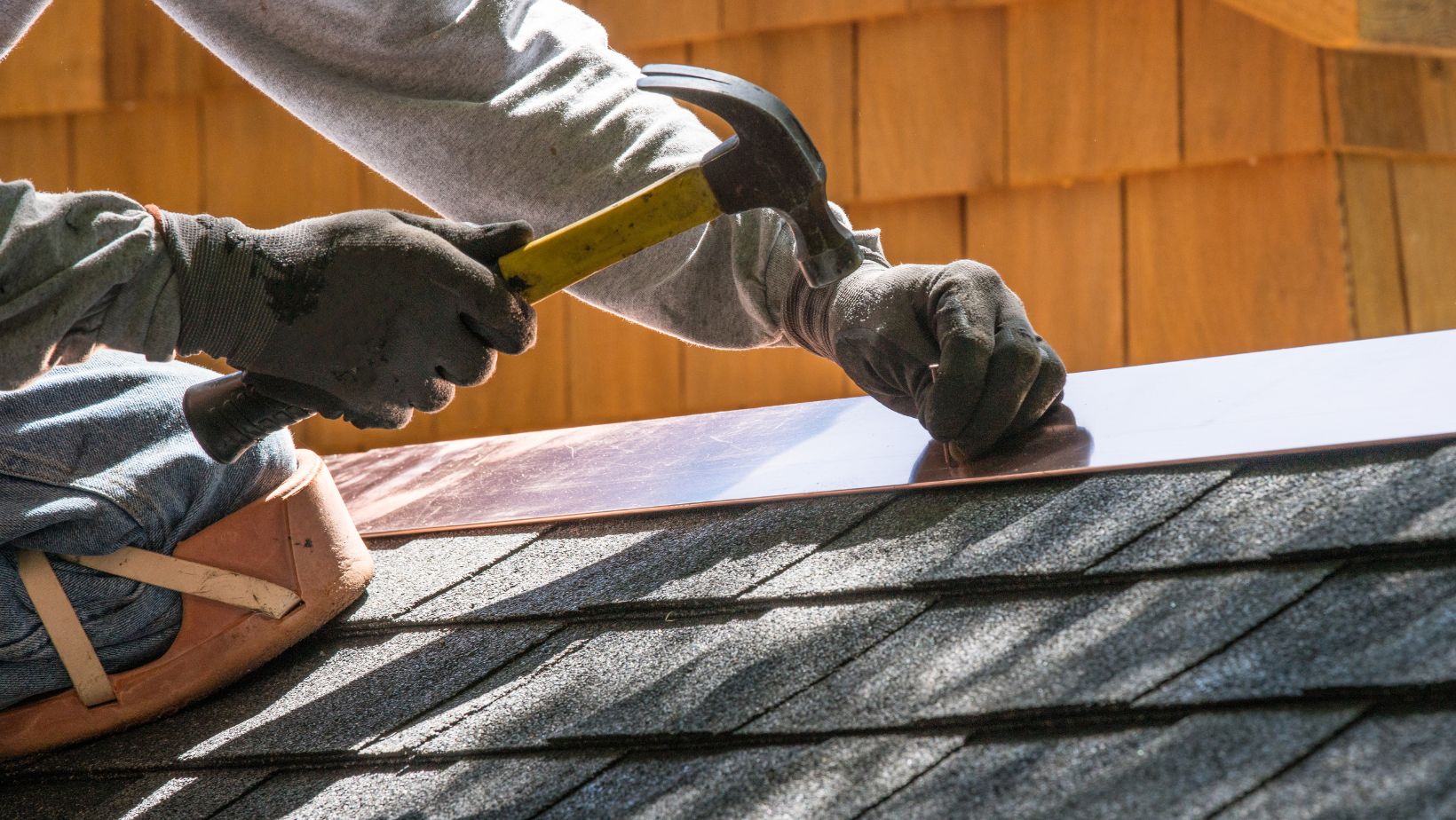
5 Signs You Need Roof Repair: A Homeowner’s Guide
 Your roof can keep your home safe from all sorts of weather. This guide will dive into what you need to know about fixing and looking after your roof. Figuring out when your roof needs some TLC is critical to keeping your place safe and sound. The folks at Kingsleyroofers.co.uk have noted some significant things to watch to ensure your roof stays in great shape.
Your roof can keep your home safe from all sorts of weather. This guide will dive into what you need to know about fixing and looking after your roof. Figuring out when your roof needs some TLC is critical to keeping your place safe and sound. The folks at Kingsleyroofers.co.uk have noted some significant things to watch to ensure your roof stays in great shape.
Visible Damage
Keep an eye out for missing, cracked, or starting to curl up shingles – these are classic signs that your roof’s seen better days and might need some work. Let’s break down these issues and see why spotting and fixing them is essential.
Types of Visible Damage
Missing Shingles
Shingles usually disappear because of rough weather, like big storms or strong winds, and sometimes from getting old and worn out. When shingles go missing, the underpart of your roof, and maybe even the wooden deck, open to the weather. This can lead to headaches, like leaks, water damage, and even more significant structural problems.
Regularly check out your roof for any spots that look uneven or bare, especially after a storm, since shingles are most likely to get knocked loose.
Cracked Shingles
They usually get that way from wind messing them up, the heat and cold making them expand and shrink, or getting old. These cracks let water sneak in, which could lead to leaks and even mess with stuff inside your house, like the rafters and insulation.
Curling Shingles
They curl because it’s too hot, not enough air flowing through, or water trapped underneath them. Sometimes, it’s because they’re getting old. It stops the shingles from keeping water out, which means you might get leaks and other damage. Watch for shingles that are starting to look like they’re peeling up at the corners or edges.
Inspection Techniques
You can use a pair of binoculars and quickly scan from the ground. This way, you can spot any apparent damage without climbing up there. Nevertheless, use a ladder if you want a closer look – remember to be safe about it.
You could also call in a pro to take a peek. Don’t forget to give your roof a good once-over after any crazy weather, like big winds, hail, or heavy rain, since they can mess up your shingles quickly.
Preventive Measures and Repair
Regular Maintenance
Clean out those gutters, chop branches over your roof, and watch for any wear and tear. Doing this stuff regularly really helps your shingles last longer.

Professional Repair or Replacement
If you spot significant damage on your roof, consider calling in a roofing expert. They can check it out and let you know if a quick fix will do the trick or if it’s time to consider replacing part or all of the roof.
DIY Repairs
For little fixes, like swapping out a few shingles, you can do it yourself if you’re up for it.
Types of Shingle Damage and Their Implications
- Shingles can go missing for various reasons, like if they weren’t put on right in the first place, they’re getting old, or the weather’s been rough.
- Cracking may be due to wind damage, thermal expansion, or material aging. Cracked shingles cannot effectively repel water, leading to potential leaks.
- Shingles curl due to excessive heat, moisture absorption, or age. Curling reduces the shingle’s ability to shed water, increasing the risk of leaks.
Inspection Tips for Homeowners
- Regular Checks: Check your roof twice a year and after any severe storms. You can also use binoculars and look at your roof from the safety of the ground.
- Weather Aftermath: After severe weather like hail or strong winds, give your roof a once-over to spot any immediate damage.
- Look for Granules: Notice those tiny, gritty bits from your shingles in the gutters or downspouts? That’s a heads-up they might be getting old or damaged.
- Check Flashing and Vents: Remember to check out other parts, like the roof flashings and chimneys, for any signs of wear or damage.
Addressing Shingle Damage
Minor Repairs
You can fix it if you’re okay with getting up on the roof. Otherwise, calling in a pro is always a good move.
Professional Assessment
If the damage looks bad, get a roofing expert to look. They’ll inspect it thoroughly and let you know if you need to fix things up or go for a complete replacement. For reliable service in your area, consider contacting an experienced Ohio roofing company, which can provide the professional assessment your roof needs.
Preventive Measures
Consider using a protective sealant or getting a roof pro to check something out regularly.
Water Damage and Leaks
If you see water stains on your ceilings or walls, that’s a clear sign. Nevertheless, keeping an eye out for the less obvious can save you from severe headaches like structural damage, mold, or issues with your insulation. The key is jumping on these problems quickly to sort them out effectively.
Identifying Water Damage and Leaks
Water Stains on Ceilings and Walls
If you spot yellow or brown stains, often with a ring pattern, on your ceilings and walls, it’s a heads-up that water might leak from your roof. It’s a good idea to watch your attic, ceilings, and upper-floor walls for these kinds of stains.
Damp or Musty Attic
If you find your attic feeling damp or smelling a bit musty, it might be a sign that it’s not getting enough ventilation or has a leaky roof. Make sure to sniff out for that musty odor and look out for any mold hanging around – these are your telltale signs.
A damp attic can weaken your roof’s structure, and mold isn’t great for your health either.
Mold Growth in Unexpected Areas
If you see black or green splotches on your ceilings or up high on your walls, that mold is making an appearance. Usually, it’s due to moisture, often from a slow leak. Molds can also be a health hazard, especially for your lungs.
Peeling Paint or Wallpaper
If your paint or wallpaper starts to peel or bubble up, that’s usually a sign there is some moisture. Watch for spots near the ceiling and close to the exterior walls.
Increased Energy Bills
Seeing your heating or cooling bills go through the roof could indicate that your roof is leaking and messing with your insulation. It’s worth looking at your insulation to check for any damp spots.
Sagging Roof
A sagging roof needs quick attention. It usually means some trouble underneath, like water damage hanging around too long, a roof that wasn’t put on right, or the roof weakening over time.
It’s essential to know why it happens, what to look out for, and how to fix it to keep your home safe and sound.
Identifying Causes of Sagging
Prolonged Water Damage
Persistent leaks can rot wood framing and sheathing, weakening the roof’s structure.
Incorrect Installation
Faulty installation of roofing materials can lead to uneven weight distribution, causing sagging.
Overburdened Roof
Heavy loads from snow accumulation or additional roofing layers can stress the structure.
Age and Wear
Over time, materials deteriorate, and the roof may sag as it nears the end of its lifespan.
Structural Weakening
Damage from pests, mold, or poor construction can weaken the roof’s support system.
Signs of a Sagging Roof
Visible Bowing
Noticeable dips or curves in the roof line are clear indicators.
Cracks in the Exterior Masonry
A sagging roof can lead to cracks in walls or masonry.
Misaligned Roof Elements
Doors, windows, and ridges that appear misaligned or uneven may suggest sagging.
Internal Ceiling or Wall Cracks
These can result from the shifting structure due to a sagging roof.
Addressing Sagging Roof Issues
Immediate Professional Assessment
You need a professional opinion if you notice signs of a sagging roof. Roofing experts can determine the cause and extent of the damage.
Repair vs. Replacement
The solution can range from repairing specific areas to a complete roof replacement.
Strengthening Structural Supports
In some cases, reinforcing or replacing weakened structural elements can resolve sagging issues.
Preventing Future Sagging
Prevent future sagging by ensuring proper roof maintenance, clearing heavy snow, and addressing leaks promptly.

Mold, Moss, and Fungi Growth
If you’ve got mold, moss, or fungi hanging out on your roof, it’s a clear sign that there’s too much moisture up there. These little guys can do a number on your roofing materials, leading to leaks and even bigger structural headaches.
Knowing why they pop up, what trouble they can cause, and how to stop them is vital in keeping your roof in good shape.
Causes of Mold, Moss, and Fungi Growth
Excess Moisture
Roofs with poor drainage or damp, shaded areas are more susceptible to these growths.
Debris Accumulation
Leaves and other debris trap moisture on the roof, providing a breeding ground for mold, moss, and fungi.
Roofing Material
Certain materials, like wood shingles, are more prone to these issues than others, like metal or slate.
Preventive Measures and Solutions
Regular Roof Cleaning
Keep your roof free of debris and moss. A stiff brush or a professional cleaning service can remove existing growths.
Improve Drainage
Ensure your gutters and downspouts are clear and functioning correctly to prevent water accumulation on your roof.
Trim Overhanging Branches
Reduce shade and moisture from nearby trees to help prevent these growths.
Consider Roofing Material
Choose materials less prone to moisture retention, like metal or asphalt shingles.
Apply Preventive Treatments
You can apply certain products to inhibit the growth of moss, mold, and fungi.
Ventilation and Insulation
Proper attic ventilation and insulation can reduce moisture build-up, preventing these issues.
When to Seek Professional Help
If your roof looks like a mini forest with mold, moss, or fungi, it’s probably time to call the pros. They can check out how bad it is and figure out the best way to fix it, whether that’s some repairs or replacing parts of the roof.
You might be able to handle the small stuff yourself, but when it’s a full-blown invasion, you’ll want the experts to take over.

Age of the Roof
Different materials last for various lengths; asphalt shingles usually hang there for 20-30 years, but metal roofs can stick around for over 50 years. Keeping track of how old your roof is can help you decide when it’s time for a check-up, a DIY, or a complete replacement.
The lifespan of Common Roofing Materials
- Asphalt Shingles are the most common roofing materials, typically lasting between 20 and 30 years. Factors like climate, roof slope, and ventilation can affect their lifespan.
- Metal Roofs are durable and can last 50 years or more. They withstand extreme weather conditions better than most materials.
- Wood Shingles and Shakes can last about 20 to 40 years. The lifespan can vary greatly depending on the quality of the wood, the climate, and maintenance efforts.
- Tile Roofs can last over 50 years. They are incredibly durable but can be susceptible to cracking in fluctuating temperatures.
- Slate Roofs are one of the longest-lasting materials. Slate roofs can endure for over 100 years with proper maintenance.
Signs of Aging in Roofs
- Frequent Leaks: Older roofs are more prone to leaks due to the breakdown of roofing materials.
- Curling or Missing Shingles: An indicator that the shingles are nearing the end of their useful life.
- Brittle or Cracked Materials: Over time, exposure to the elements can make roofing materials brittle and prone to cracking.
- Fading Color: Long-term exposure to sunlight can cause materials to fade, indicating aging.
- Granule Loss: A loss of granules is a sign of aging and wear for asphalt roofs.
Maintenance and Replacement Decisions
Keeping your roof in shape is all about doing the regular stuff – cleaning it up, fixing the minor dings, and ensuring it has good airflow. This can help stretch out how long your roof lasts.
Nevertheless, if it’s starting to look worn out, it might be wiser to replace it. And when you do, think about going for materials that last longer or work better with the weather you get.
Conclusion
Identifying signs of roof damage is key to keeping your home safe and sound. Look for visible damage, water leaks, sagging structure, and biological growth, and consider the roof’s age. Regular checks and maintenance are crucial, but seek professional advice if you notice these signs. Remember, your roof is a significant investment in your home. For expert advice and services, don’t hesitate to seek professional assistance.



















































































